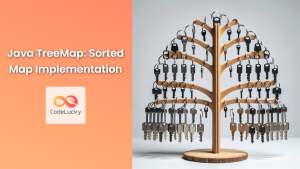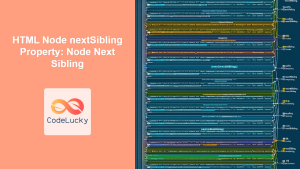Binary trees are fundamental data structures in computer science, offering efficient ways to organize and search data. In this comprehensive guide, we'll dive deep into the world of binary trees in C, exploring their implementation, traversal methods, and practical applications.
Understanding Binary Trees
A binary tree is a hierarchical data structure where each node has at most two children, typically referred to as the left child and the right child. The topmost node is called the root, and nodes with no children are called leaves.
Let's start by defining the structure of a binary tree node in C:
struct Node {
int data;
struct Node* left;
struct Node* right;
};
This structure represents a single node in our binary tree. It contains an integer data field to store the node's value, and two pointers (left and right) to reference its child nodes.
Creating a Binary Tree
Now that we have our node structure, let's implement a function to create a new node:
struct Node* createNode(int value) {
struct Node* newNode = (struct Node*)malloc(sizeof(struct Node));
if (newNode == NULL) {
printf("Memory allocation failed!\n");
exit(1);
}
newNode->data = value;
newNode->left = NULL;
newNode->right = NULL;
return newNode;
}
This function allocates memory for a new node, initializes its data with the given value, sets both child pointers to NULL, and returns the newly created node.
Let's create a simple binary tree:
int main() {
struct Node* root = createNode(1);
root->left = createNode(2);
root->right = createNode(3);
root->left->left = createNode(4);
root->left->right = createNode(5);
// The tree now looks like this:
// 1
// / \
// 2 3
// / \
// 4 5
return 0;
}
Tree Traversal Methods
There are three main ways to traverse a binary tree: in-order, pre-order, and post-order. Let's implement each of these methods:
1. In-order Traversal
In-order traversal visits the left subtree, then the root, and finally the right subtree.
void inorderTraversal(struct Node* root) {
if (root == NULL) return;
inorderTraversal(root->left);
printf("%d ", root->data);
inorderTraversal(root->right);
}
2. Pre-order Traversal
Pre-order traversal visits the root, then the left subtree, and finally the right subtree.
void preorderTraversal(struct Node* root) {
if (root == NULL) return;
printf("%d ", root->data);
preorderTraversal(root->left);
preorderTraversal(root->right);
}
3. Post-order Traversal
Post-order traversal visits the left subtree, then the right subtree, and finally the root.
void postorderTraversal(struct Node* root) {
if (root == NULL) return;
postorderTraversal(root->left);
postorderTraversal(root->right);
printf("%d ", root->data);
}
Let's see these traversal methods in action:
int main() {
struct Node* root = createNode(1);
root->left = createNode(2);
root->right = createNode(3);
root->left->left = createNode(4);
root->left->right = createNode(5);
printf("In-order traversal: ");
inorderTraversal(root);
printf("\n");
printf("Pre-order traversal: ");
preorderTraversal(root);
printf("\n");
printf("Post-order traversal: ");
postorderTraversal(root);
printf("\n");
return 0;
}
Output:
In-order traversal: 4 2 5 1 3
Pre-order traversal: 1 2 4 5 3
Post-order traversal: 4 5 2 3 1
Binary Search Trees (BST)
A Binary Search Tree is a special type of binary tree where the left child of a node contains only nodes with keys less than the node's key, and the right child only nodes with keys greater than the node's key.
Let's implement the insertion operation for a BST:
struct Node* insert(struct Node* root, int value) {
if (root == NULL) return createNode(value);
if (value < root->data)
root->left = insert(root->left, value);
else if (value > root->data)
root->right = insert(root->right, value);
return root;
}
Now, let's create a BST and perform some operations:
int main() {
struct Node* root = NULL;
root = insert(root, 50);
insert(root, 30);
insert(root, 20);
insert(root, 40);
insert(root, 70);
insert(root, 60);
insert(root, 80);
printf("In-order traversal of the BST: ");
inorderTraversal(root);
printf("\n");
return 0;
}
Output:
In-order traversal of the BST: 20 30 40 50 60 70 80
Searching in a Binary Search Tree
One of the main advantages of a BST is its efficient search operation. Let's implement a search function:
struct Node* search(struct Node* root, int key) {
if (root == NULL || root->data == key)
return root;
if (key < root->data)
return search(root->left, key);
return search(root->right, key);
}
Let's use this search function:
int main() {
struct Node* root = NULL;
root = insert(root, 50);
insert(root, 30);
insert(root, 20);
insert(root, 40);
insert(root, 70);
insert(root, 60);
insert(root, 80);
int searchKey = 40;
struct Node* result = search(root, searchKey);
if (result != NULL)
printf("Found %d in the BST\n", searchKey);
else
printf("%d not found in the BST\n", searchKey);
searchKey = 90;
result = search(root, searchKey);
if (result != NULL)
printf("Found %d in the BST\n", searchKey);
else
printf("%d not found in the BST\n", searchKey);
return 0;
}
Output:
Found 40 in the BST
90 not found in the BST
Deleting a Node from BST
Deleting a node from a BST is a bit more complex than insertion or search. We need to consider three cases:
- Node to be deleted is a leaf (has no children)
- Node to be deleted has only one child
- Node to be deleted has two children
Here's the implementation:
struct Node* findMin(struct Node* node) {
struct Node* current = node;
while (current && current->left != NULL)
current = current->left;
return current;
}
struct Node* deleteNode(struct Node* root, int key) {
if (root == NULL) return root;
if (key < root->data)
root->left = deleteNode(root->left, key);
else if (key > root->data)
root->right = deleteNode(root->right, key);
else {
// Node with only one child or no child
if (root->left == NULL) {
struct Node* temp = root->right;
free(root);
return temp;
} else if (root->right == NULL) {
struct Node* temp = root->left;
free(root);
return temp;
}
// Node with two children
struct Node* temp = findMin(root->right);
root->data = temp->data;
root->right = deleteNode(root->right, temp->data);
}
return root;
}
Let's use this delete function:
int main() {
struct Node* root = NULL;
root = insert(root, 50);
insert(root, 30);
insert(root, 20);
insert(root, 40);
insert(root, 70);
insert(root, 60);
insert(root, 80);
printf("Original BST: ");
inorderTraversal(root);
printf("\n");
root = deleteNode(root, 20);
printf("After deleting 20: ");
inorderTraversal(root);
printf("\n");
root = deleteNode(root, 30);
printf("After deleting 30: ");
inorderTraversal(root);
printf("\n");
root = deleteNode(root, 50);
printf("After deleting 50: ");
inorderTraversal(root);
printf("\n");
return 0;
}
Output:
Original BST: 20 30 40 50 60 70 80
After deleting 20: 30 40 50 60 70 80
After deleting 30: 40 50 60 70 80
After deleting 50: 40 60 70 80
Tree Balancing
One potential issue with BSTs is that they can become unbalanced, leading to poor performance. For example, if we insert elements in sorted order, the tree will degenerate into a linked list.
To address this, various self-balancing binary search trees have been developed, such as AVL trees and Red-Black trees. These structures maintain balance by performing rotations during insertions and deletions.
Here's a simple implementation of a right rotation, which is a fundamental operation in tree balancing:
struct Node* rightRotate(struct Node* y) {
struct Node* x = y->left;
struct Node* T2 = x->right;
// Perform rotation
x->right = y;
y->left = T2;
return x;
}
This rotation would be used in more complex balancing algorithms to maintain the tree's balance.
Applications of Binary Trees
Binary trees, especially BSTs, have numerous applications in computer science:
-
🔍 Efficient searching and sorting: BSTs provide O(log n) time complexity for search, insert, and delete operations in the average case.
-
📊 Expression parsing: Binary expression trees can represent and evaluate arithmetic expressions.
-
📁 File system organization: Directory structures in file systems often use tree-like structures.
-
🧠 Decision trees: Used in machine learning for classification and regression tasks.
-
📚 Huffman coding: Used in data compression algorithms.
Conclusion
Binary trees are versatile data structures that form the foundation for many advanced algorithms and applications. In this article, we've explored the basics of binary trees, their implementation in C, traversal methods, and operations specific to Binary Search Trees.
We've seen how to create, traverse, search, and modify binary trees, providing you with a solid foundation for working with these important data structures. As you continue your journey in C programming and computer science, you'll find that understanding binary trees opens doors to more advanced topics like balanced trees, graph algorithms, and complex data processing techniques.
Remember, practice is key to mastering these concepts. Try implementing these examples, experiment with different tree structures, and challenge yourself to solve problems using binary trees. Happy coding! 🌳💻



















